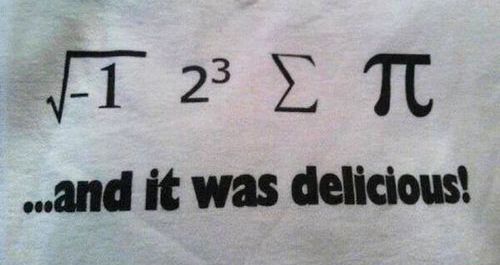Does the Bible Teach that Pi = 3?
by Trent Horn
Filed under The Bible
Every year on March 14 fans of math gather to enjoy a slice of pie along with discussions about pi, or the ratio of a circle’s circumference to its diameter. Since the value of pi is approximately 3.14, pi day is held on March 14 (or 3/14) each year.
One objection to the Bible that pops up all over the Internet is the claim that the Bible teaches that Pi is actually three and not 3.14. In the first Book of Kings, Solomon selects Hiram to create a large, bronze basin of water for the new temple. 1 Kings 7:23 describes how Hiram “made the molten sea; it was round, ten cubits from brim to brim, and five cubits high, and a line of thirty cubits measured its circumference” (a cubit is about 18 inches in length).
The skeptic says this is mistaken, because if the diameter of the basin was ten cubits, then the circumference should be about 31.4 cubits, not thirty cubits. Steve Wells, the author of the Annotated Skeptics Bible, writes, "This verse implies that the value of pi is 3. (The actual value is approximately 3.14159)."
Of course, the Book of Kings is neither a mathematical textbook nor is it an architectural manual. The ancient writers would have had no qualms about referring to the circumference of Solomon’s basin as being 30 cubits in length even if it was actually 31 cubits in length. This is like how we might say a Boeing 747 jet airliner can hold 63,000 gallons of fuel even though technically it can hold 63,705 gallons of fuel.
Furthermore, we have to remember that the Bible is not trying to teach the value of pi; it’s just recording how a real object was created. Calculating the circumference of a circle in a math problem is easy, because the circle is composed of a line that technically has no width. In contrast, Solomon’s basin would have had thick sides in order to maintain its structural integrity. 1 Kings 7:26 says, “Its thickness was a handbreadth; and its brim was made like the brim of a cup, like the flower of a lily; it held two thousand baths.”
This means that the basin had a rim that was greater in circumference than the circumference of the basin’s main body (due to its ornate lilylike shape). According to 1 Kings 7:23, the basin was 10 cubits from “rim to rim,” which probably included the thick edge fashioned like a lily that was a “handbreadth” in width. This means that the diameter of the basin may have been closer to 9.6 cubits in order to allow for a rim that is about 3 inches wide (or a "handbreadth" in width). If it were, then the circumference of the basin below the ornate lily rim would have been 30 cubits in length, just like the Bible describes it.
Skeptics will always find what they consider to be errors in the Bible if they assume the Bible is some kind of divine encyclopedia written by God himself. But the books of the Bible have both a human and a divine author, which frees them from error but also imposes limits on what is taught (just as Christ was fully God but was still limited in his human nature). One such limitation includes rounding for simplicity.
In conclusion, a closer look at the passage shows that the skeptic's argument that the Bible teaches that pi equals three just doesn't add up.
Related Posts
Note: Our goal is to cultivate serious and respectful dialogue. While it's OK to disagree—even encouraged!—any snarky, offensive, or off-topic comments will be deleted. Before commenting please read the Commenting Rules and Tips. If you're having trouble commenting, read the Commenting Instructions.













